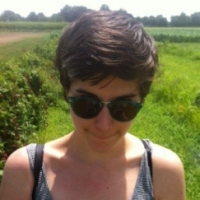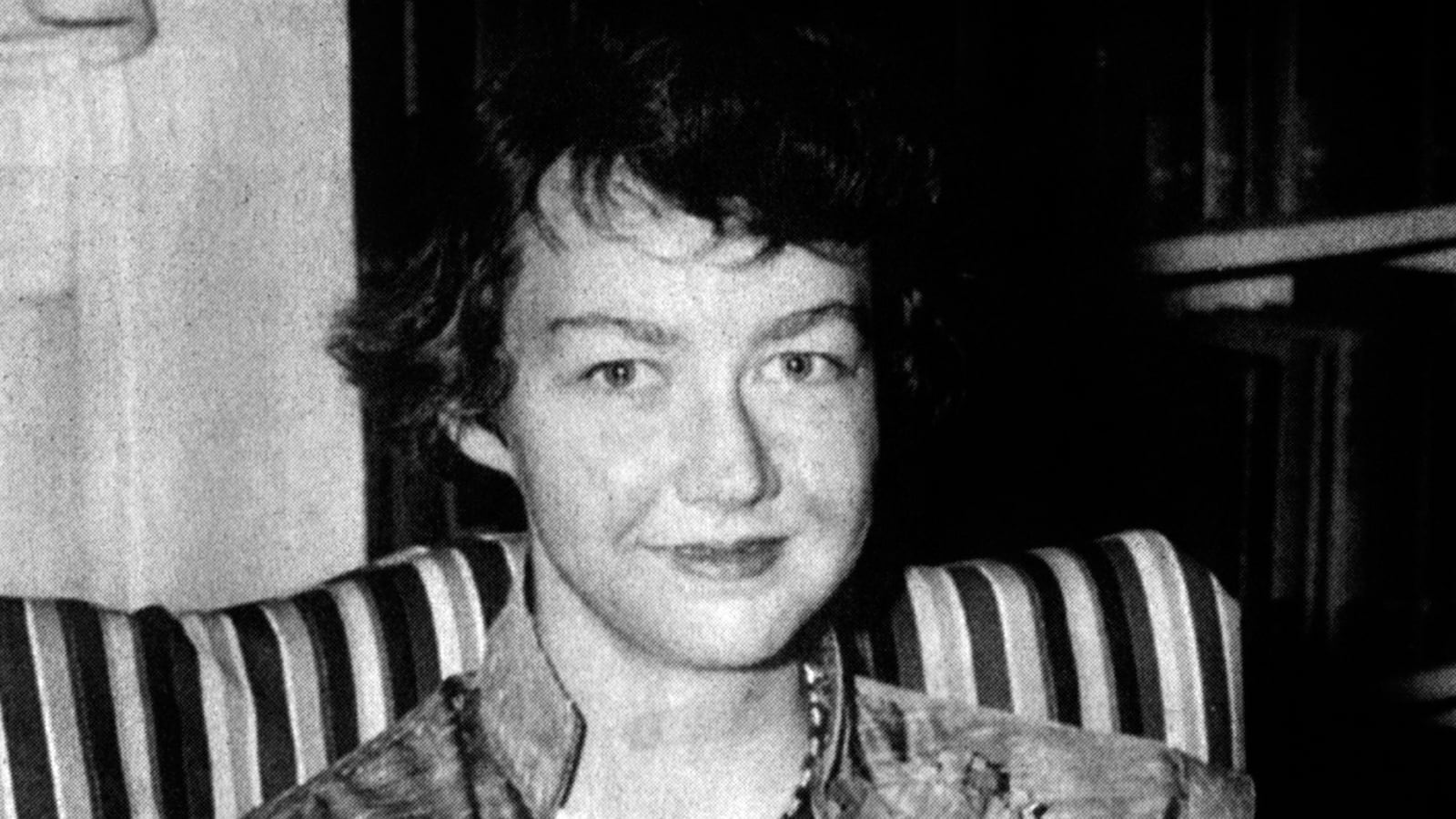If a myth is built around an author, her most intimate thoughts become worthy of a hardcover. Flannery O’Connor is certainly the stuff of myth. Born Mary Flannery O’Connor in 1925 to Irish Catholic parents in Savannah, Georgia, she kept her full name until she began publishing stories and novels, an ambition that was initially second to her desire to be a cartoonist like James Thurber. By all her peers’ accounts, she was “weird” and “wry,” sometimes merciless. For some, her religion was off-putting; Patricia Highsmith recalled a time at Yaddo when O’Connor was raving about a knot that looked like Jesus’ face. “Ever since then,” Highsmith concluded, “I’ve not liked that woman.” Her piety alone, however ardent it was, isn’t enough to distinguish her. O’Connor’s oddness is often embodied in popular accounts by her collection of peafowl and other richly colored birds. In addition to several peacocks, she owned mallards, pheasants, bantams, and a one-eyed swan. Around the age of five, she owned a chicken known for walking backwards; a filmmaker working for Pathé tried to document it, but the chicken just made Flannery giggle with its incompetence.

Despite such anecdotes, there is still a wall between O’Connor and her audience. She rejected the premise of fiction being at all revelatory of the author’s character. “Any story I reveal myself completely in,” she wrote to a friend, “will be a bad story.” We have letters like this to tell us what she thought, and in his biography Brad Gooch does tell us that “during her twelfth year she began a journal that amounted to a collection of random rants.” She also gave lectures, some of which stand in for statements of purpose.
Per her denouncement of putting herself in her work, we haven’t had much in the way of revelation as far as Flannery O’Connor the person is concerned. She is not fully seen in her letters, her lectures, or her stories. Now, thanks to her friend William Sessions, we have a prayer journal, a slim volume of fragments written in the years 1946 and 1947, when she was barely 22 years old. These prayers hardly fit 50 pages sans facsimile. They are closer to intimate knowledge of O’Connor than anything that has come before. They reveal an altogether vulnerable, fallible person with ambition, passion, and doubt. This journal is humble juvenilia, but its focus is so personal that it stands above the usual sort of biographical artifact. This is a dramatic dialogue between an author and her God.
On one hand, these prayers show us in startlingly innocent prose the beginnings of O’Connor’s enduring fixations: grace, virtue, one’s intellectual limitations. On the other hand, they explore something too hastily put aside by critics in favor of discussing her politics and Catholicism: the significance of emotion for O’Connor. Most are quick to point out that she rarely wrote about love or romance, but this journal underlines just how important desire (albeit of a religious sort) was to her.
O’Connor fleshes out the meaning of love in her prayers, and she shows herself to be unafraid of the vulnerability that comes with it. “Dear God,” she begins in one fragment. “I cannot love Thee the way I want to. …I can feel a warmth of love heating me when I think & write this to You.” Feeling was as important to her as intellect, perhaps because she felt farther from feelings than from her rational mind. “To feel, we must know,” she wrote, “and for this… we are dependent on God.”
O’Connor recognizes over and over how integral her intellectualism is to her struggle with prayer and devotion. She insists on calling attention to what psychologists would say about her religious fervor, perhaps in a nod to William James’s Varieties of Religious Experience, which argued against a pathological view of the religious individual. Any kind of religious emotion was still emotion, after all. James argued that the love a person felt for the divine was not necessarily the result of thwarted sexual expression or cowardice, but O’Connor was not as confident. While she agreed that there was “no need to define love as they do—only as desire,” and she analyzed the arguments against her faith with ferocity, she still doubted herself. “At every point in this educational process, we are told that [faith in God] is ridiculous and their arguments sound so good it is hard not to fall into them,” she lamented. “I don’t want to have invented my faith to satisfy my weakness.”

Feelings of helplessness and incompleteness, for O’Connor, were characteristic of an intense stage in her development as both a religious person and a writer. Her melancholy was essential to her evolution in this regard, and her prayers reflect this. She equated what she felt for God with a Proustian desire, which she agreed was “the highest point of existence.” But what sort of desire are we talking about? O’Connor has never been presented in criticism and biographies as a sexual person. Her stories memorably show carnal relations as a means to a vicious end.
Take Hulga, the one-legged shut-in in “Good Country People.” Her attraction to a cruel bible salesman leaves her robbed of her prosthesis and stranded in a pile of straw. Because of superficial similarities, Hulga’s story is the easiest analogy for critics to draw to the real O’Connor. Hulga is in her thirties and lives with her mother, whom she embarrasses with her intelligence and lack of interest in starting a family of her own. Hulga eschews her given name—Joy, of course—much like Mary Flannery did, although Mary Flannery asked permission first from her mother.
But this is a reductive and somewhat dull reading of the story even without O’Connor’s preference to leave herself out of her work. O’Connor’s prayer journal emphasizes a relationship with sex that’s not doomed as much as it is naïve and sweet. “Today I have proved myself a glutton—for Scotch oatmeal cookies and erotic thought,” she almost wails, and she seems less like an intellectual titan and more like a girl in knee socks. “The Sex act,” she writes with an absurd authority, “is a religious act & when it occurs without God it is a mock act or at best an empty act. Proust is right that only a love which does not satisfy can continue.” She goes on to dismiss “stinking romanticism” as sick, akin to “boils & blisters & warts.” The physical did not appeal, in other words, at all. Greater feelings were more important. “I do not want to be lonely all my life,” she writes, “but people only make us lonelier by reminding us of God.”
O’Connor often wrote prayers about her own feelings of inadequacy. She yearned to be a good writer, “the best artist it is possible for me to be,” but she feared she would never be one without God’s help. She does not, in this journal, exhibit the same sort of judgmental self-satisfaction that her female protagonists suffer from. She called herself slothful, dirty, foolish, ridiculous, and mediocre. At times, she seems self-flagellating in the most dutiful way—John Paul II would have approved—and it appears that the writer who would create such complex stories as “A Good Man Is Hard to Find” was a fairly typical Catholic of her time.
But I cannot help seeing these moments of honest humility in the context of her fiction. In “A Good Man Is Hard to Find,” for example, an old woman tries to reason with a serial killer by asking him if he prays. “If you would pray, Jesus would help you,” she says to him, and he agrees that this would be the case. “Well then, why don’t you pray?” she asks. “I don’t want no help,” he says. “I’m doing all right by myself.” In an instance of hysteria, the woman reaches out and calls him one of her children; he responds by shooting her three times in the chest. O’Connor describes his eyes after the killing as “red-rimmed and pale and defenseless.” It’s an ugly moment, but one of vulnerability. He shuns compassion, and he feels its absence.
Diagnosed with lupus when she was 26 and dying from related complications at the age of 39, O’Connor did not live long enough to have a large body of personal effects to exhume. Her work has spoken for itself, but her prayer journal is a crucial supplement. It shows a mind at work with the possibilities of emotions and drama. While the myth of her has been fed by an idea of hermitage, ill as she was and cantankerous as her letters suggest she could be, her private writings clarify that she did not shun the life of a feeling person. She felt quite a bit. But she felt an absence anyway, and she prayed for it to go away.






